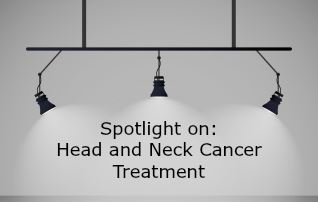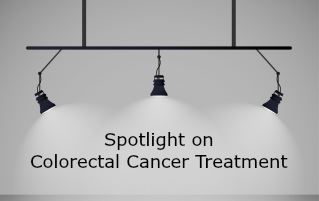Spotlight on: Head and Neck Cancer Treatment

Novel treatments are emerging that show great promise for patients with head and neck cancer, which is characterised by poor prognosis and high mortality rate.
Although treatment options like surgery and chemo- or radiotherapy are available for tumours that develop in the head and neck, these don’t selectively target cancer cells. They can cause significant damage also in healthy tissues. Their effectiveness is therefore offset by an increased risk of associated side effects.
Newer treatments are being investigated that aim to address this particular challenge.
Photodynamic therapy (PDT)
A good example is photodynamic therapy. In this approach, a compound that reacts to light, called a photosensitizer, is administered to the patient via intravenous injection. The photosensitizer is absorbed by the tumour, which is then exposed to laser light. This causes a reaction that releases oxygen and leads to the death of cancer cells, while leaving nearby healthy tissues largely undamaged.
As a result, treatment effectiveness is enhanced and the risk of side effects is reduced.
The use of PDT for head and neck cancer is still under study. So far, it has yielded positive results in the treatment of early head and neck squamous cell carcinoma (HNSCC).
Affecting the mouth, nose or throat, HNSCC accounts for more than 90 per cent of all cases of head and neck cancers, and is the seventh most common cancer globally.
Several studies involving patients with this type of cancer have found that PDT achieves similar complete response and survival rates to surgery, with the added advantage of being less invasive and likely to produce scarring and loss of voice and/or swallowing ability. (Complete response is when the cancer disappears completely for some time.)
NBTXR3 nanoparticles
Meanwhile, positive results have been announced for a phase I/II clinical trial investigating the use of a pioneering anticancer agent called NBTXR3.
This is essentially a mixture of nanoparticles dispersed in a fluid, which can be injected directly into the tumour. It allows the use of higher than normal doses of standard radiotherapy, enhancing the cancer killing potential of the latter, without increasing the risk of side effects.
In the trial, NBTXR3 was used for head and neck cancers that develop in the mouth, tongue or throat. Treatment resulted in “7 out of 7 evaluable patients … [showing] a tumour volume reduction equal or superior to 50%,” according to study researchers.

Gene therapy
Studies are also under way to assess the efficacy of gene therapy as a treatment option for HNSCC. With this approach, genetic material is introduced into a patient’s cells, usually through harmless viruses called viral vectors.
The aim is to replace faulty or missing genes that are thought to be involved in cancer initiation and progression.
Research appeared in BMC Medicine found, for example, promising results for a type of gene therapy known as recombinant adenoviral p53 (rAd-p53). Used in combination with standard chemotherapy, rAd-p53 significantly increased survival in patients with stage III head and neck cancer that develops in the mouth, compared with chemotherapy alone.
The efficacy and safety of recombinant adenoviral p53 will now be tested in a new phase II clinical trial involving patients with advanced head and neck cancer that cannot be removed with surgery.
Emerging immunotherapies
Another rapidly evolving field in head and neck cancer treatment is immunotherapy, particularly checkpoint inhibitors.
Checkpoint inhibitors include compounds that can bind to certain proteins on the surface of immune cells, enabling them to ‘see’ the cancer. This prompts the immune system to respond against the tumour, while leaving healthy cells alone.
Promising results have so far been reported for several of these compounds, including pembrolizumab and durvalumab. In clinical trials of head and neck squamous cell carcinoma, both produced substantial benefits in terms of response rate (the percentage of patients who experience a reduction in tumour size). Their efficacy is now being evaluated in a number of new studies, such as NCT02296684 and NCT02369874, which are still enrolling patients.
Significant improvements in survival compared with standard chemotherapy have been reported for another checkpoint inhibitor, called nivolumab. In a clinical phase III study published in the New England Journal of Medicine, the median overall survival of patients with recurrent HNSCC who received nivolumab was 7.5 months; that of those who received standard therapy with cetuximab, methotrexate or docetaxel was 5.1 months.
New hope for patients
Commenting on the recent head and neck cancer research, Richard Kensett, managing director at Alivia Swiss Health UK, says: “The findings to date are encouraging, given the aggressive nature of this particular type of cancer.”
What’s more, he adds, “they offer new hope for those patients who fail to respond to standard treatment with chemotherapy, radiotherapy or surgery, and for whom there is virtually no therapeutic option left.”
Creatives designed by freepic.com




